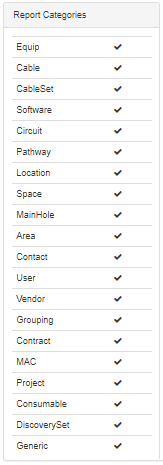4.3.7.2. IRM License
IRM licenses control the features, maximum object counts, cloud instance credits and expiration date based upon the customer's current IRM subscription. If the license expires, Users will not be able to log in, however, customer data will not be deleted for some time after the expiration.
For more details about IRM 's licensable features, maximum object counts and IRM cloud instances and cloud instance credits, click on the following overview topic - IRM Licensing. Also, for additional coverage of the main concepts and terminology involved with the IRM License, click on the following Overview section - License - Concepts & Terminology.
The Global Console License menu is a read-only page that displays the following information about the current User's license details:
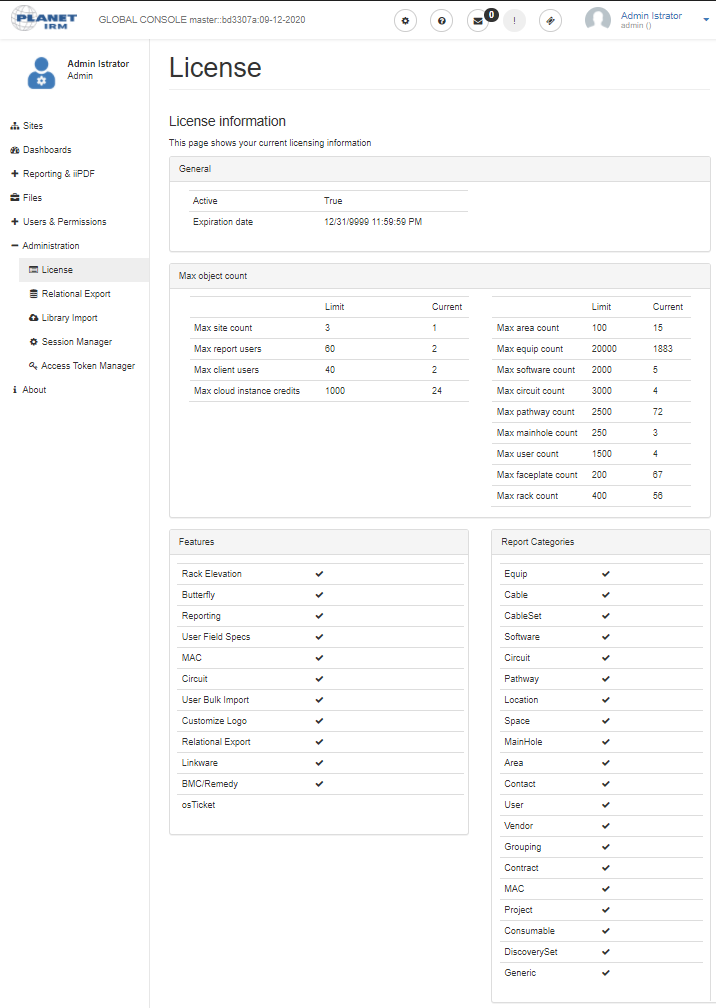
-
General -- a section containing basic information about the current User's license, which is comprised of the following two parameters:
-
Active - can be True or False, if false, this account is deactivated and users have no access (but it's not deleted)
-
Expiration date - after this time, the account automatically becomes deactivated
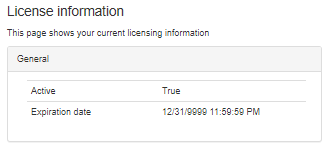
-
Maximum object count, or the maximum number of objects, across ALL Sites, that the IRM deployment may have.
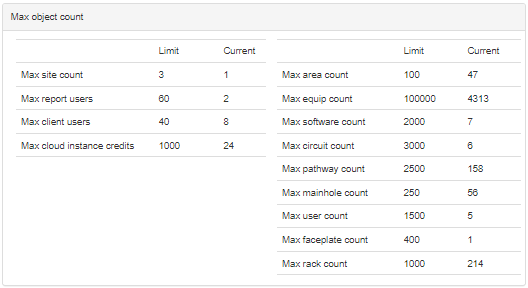
-
Most of the object count restrictions are on a Super Category basis, but Max Faceplate Count is a special case where the count is for a specific Category of objects.
-
Another metric that can be monitored in this section is the Maximum cloud instance credits - Having more Cloud Instance Credits allows the customer to create Sites that use larger / faster machines in Planet's SaaS cloud. For more details about this, click on the following topic - IRM Licensing.
-
The way the maximum object counts are computed and enforced is impacted by a special-purpose license feature - Add-on license.For airports and certain other special customers, IRM allows more than one license to govern maximum object counts in IRM. By utilizing a separate license for objects in selected top-level Area Categories, IRM adds some additional flexibility on how maximum object counts are restricted.
-
As mentioned, the counts are computed for all objects in all Sites, and that computation is still done even if there are add-on licenses. However, a count of the relevant fields is also done for each add-on license (the counts on the far-left side are not relevant, since those are not Area-specific objects). These counts for each add-on license are checked directly against that license, while the counts for all add-on licenses are added up and subtracted from the total counts. That gives a set of counts that is then checked against the parent license.
For example, if there are two add-on licenses "license1" and "license2" that have Equipment counts E1 and E2, the total Equipment count is Et, then E1 is checked against max Equipment Count for license1, E2 is checked against max Equipment Count for license2, and Et - (E1+E2) is checked against max Equipment Count for the main license.
-
Enabled Features - the list of basic IRM features that are currently available to all users. The checkbox being checked indicates the feature is available, while the lack of it, as for Relational Export in the screenshot below, indicates the feature is not enabled.
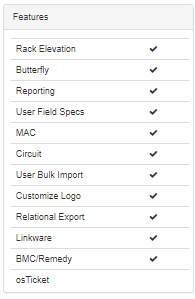
-
Report Categories - the list of all Report Categories that are currently available to all users. The checkbox being checked indicates the Report Category is available, while the lack of it indicates the category is not enabled.
